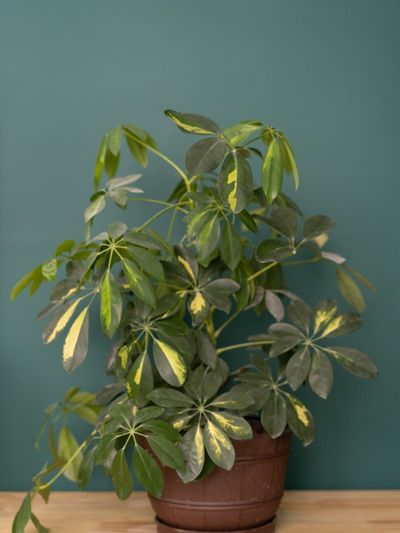Schefflera Plant Care Instructions
There are two very important parts to proper schefflera care. The first is correct sunlight and the second is proper watering. Light – Schefflera plants are medium light plants, which means that they need bright but indirect light. A common complaint about schefflera plants is that they get leggy and floppy. This problem is caused by too little light. Making sure that you are growing schefflera in the right kind of light will help prevent leggy growth. On the other side, you do not want to place a schefflera houseplant in direct, bright light, as this will burn the leaves. Water – When growing schefflera, be aware that watering correctly will help to keep your schefflera houseplant healthy. To water correctly, wait until the soil in the pot dries out and then thoroughly soak the soil when you water. Often people will overwater their schefflera plant and this will eventually kill it. Yellow leaves that fall off the plant is a sign that you may be watering too much. Additional care of schefflera includes pruning and fertilization. Pruning – Your schefflera may also need to be pruned occasionally, especially if it is not getting quite enough light. Pruning a schefflera is simple. Just cut off what you feel is overgrown or leggy back to a size or shape you like. Schefflera houseplants rebound quickly from pruning and will look even fuller and more lush shortly after pruning. Fertilizer – You do not need to fertilize your schefflera, but if you would like to, you can give it a half solution water soluble fertilizer once a year. Schefflera plants are poisonous to people and animals, if eaten. It is not often fatal, but will cause a burning sensation, swelling, difficulty swallowing, and in severe cases, difficulty breathing.
Schefflera Houseplant Pests and Diseases
Schefflera plants are not often bothered by pests or disease, but it can happen occasionally. Spider mites and mealybugs are the most common pests that affect schefflera plants. In light cases of infestation, washing the plant with water and soap will normally eliminate the pests. With heavier infestations, you many need to treat the plant with an insecticide like neem oil. Also, be aware that pests typically attack this plant if it is stressed. If your schefflera has pests, this is likely a sign it is either getting too little light or too much water. The most common disease that affects schefflera is root rot. This disease is brought on by overwatering and poor drainage in the soil.
